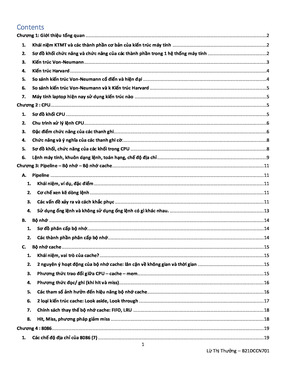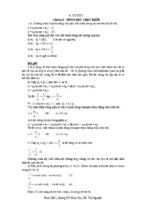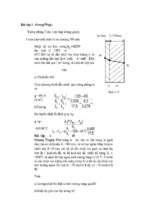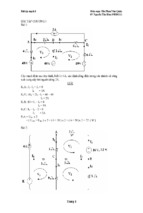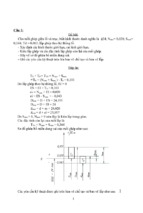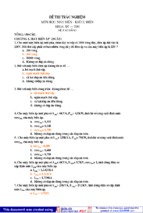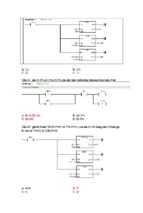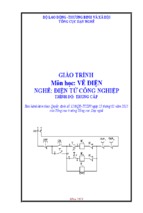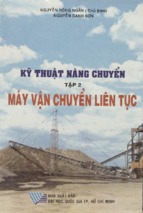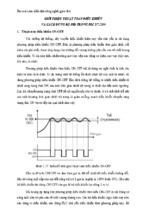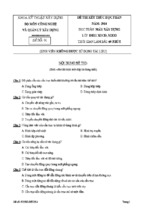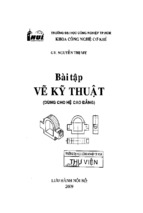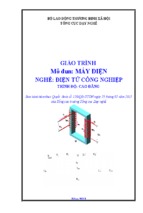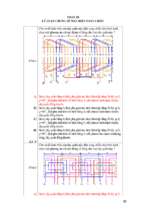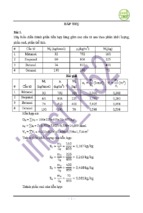TABLE OF CONTENTS
LIST OF TABLES ...................................................................................................... viii
LIST OF FIGURES ........................................................................................................ix
LIST OF ABBREVIATION......................................................................................... xii
INTRODUCTION ...........................................................................................................1
CHAPTER 1
LITERATURE REVIEWS...................................................................4
1.1 Metal organic framework.............................................................................4
1.1.1 Introduction ............................................................................................ 4
1.1.2 MOF properties ......................................................................................5
1.1.3 MOF synthesis .......................................................................................6
1.1.4 MOF application ....................................................................................7
1.2
The application of MOFs in catalysis ......................................................8
1.2. 1 MOFs with Metal Active Sites ............................................................. 9
1.2.2 MOFs with Reactive Functional Groups .............................................18
1.2.3 Grafted species as an active site .......................................................... 20
CHAPTER 2
EXPERIMENTAL .............................................................................30
2.1 Materials and instrumentation ....................................................................30
2.2 MOF synthesis ............................................................................................ 31
2.2.1 IRMOF-8 ............................................................................................. 31
2.2.2 ZIF-9 ....................................................................................................31
2.2.3 MOF-199 ............................................................................................. 32
2.2.4 IRMOF-3 ............................................................................................. 32
2.3 Catalytic studies .......................................................................................... 32
vi
2.3.1 The Friedel-Crafts acylation reaction ..................................................32
2.3.2 The Knoevenagel reaction ...................................................................33
2.3.3 Aza-Michael Reaction .........................................................................34
2.3.4 The Paal-Knorr reaction.......................................................................34
CHAPTER 3
RESULTS AND DISCUSSIONS ......................................................36
3.1 Catalyst characterization ............................................................................36
3.1.1 IRMOF-8 ............................................................................................. 36
3.3.2 ZIF-9 ....................................................................................................40
3.3.3 MOF-199 ............................................................................................. 44
3.3.4 IRMOF-3 ............................................................................................ 48
3.2 Catalytic studies .......................................................................................... 52
3.2.1 The Friedel-Crafts acylation reaction .................................................52
3.2.2 The Knoevenagel reaction ...................................................................61
3.2.3 The aza-Michael reaction.....................................................................72
3.2.4 The Paal-Knorr reaction.......................................................................85
CHAPTER 4
CONCLUSIONS ................................................................................97
LIST OF PUBLICATIONS ..............................................................................99
REFERENCES ............................................................................................................100
vii
LIST OF TABLES
Table 1.1: The surface area of some materials ................................................................ 6
Table 1.2 Reported catalytic properties of MOF compounds with active metal sites ....9
Table 1.3. Reported catalytic properties of MOF compounds with reactive functional
groups ............................................................................................................................ 20
viii
LIST OF FIGURES
Figure 1.1. Examples of inorganic and organic SBUs [22].............................................5
Figure 1.2 The ligand of POST-1 ..................................................................................18
Figure 1.3. The schematic view of 1,3,5-benzene tricarboxylic acid tris[N-(4pyridyl)amide] ...............................................................................................................20
Figure 3.1 XRD of the IRMOF-8 ..................................................................................38
Figure 3.2 SEM micrograph of the IRMOF-8 ............................................................... 38
Figure 3.3TEM micrograph of the IRMOF-8 ............................................................... 39
Figure 3.4. TGA analysis of IRMOF-8 .........................................................................39
Figure 3.5 FT-IR spectra of the IRMOF-8 (a), and 2,6-napthalenedicarboxylic acid (b).
.......................................................................................................................................40
Figure 3.6 XRD of the ZIF-9 ......................................................................................... 42
Figure 3.7 SEM micrograph of the ZIF-9 ....................................................................42
Figure 3.8 TEM micrograph of the ZIF-9 .....................................................................43
Figure 3.9 TGA analysis of ZIF-9 .................................................................................43
Figure 3.10 FT-IR spectra of the ZIF-9 (a) and benzimidazole (b). ............................. 44
Figure 3.11 XRD of the MOF-199 ................................................................................45
Figure 3.12 SEM micrograph of the MOF-199 ............................................................ 46
Figure 3.13 TEM micrograph of the MOF-199 ............................................................ 46
Figure 3.15 FT-IR spectra of the MOF-199 (a) and the 1,3,5-benzenetricarboxylic acid
(b)...................................................................................................................................47
Figure 3.14 TGA analysis of MOF-199 ........................................................................47
Figure 3.16 XRD of the IRMOF-3 ................................................................................49
Figure 3.17 SEM micrograph of the IRMOF-3 ............................................................. 50
Figure 3.18 TEM micrograph of the IRMOF-3 ............................................................ 50
Figure 3.19 TGA analysis of IRMOF-3. .......................................................................51
Figure
3.20
FT-IR
spectra
of
the
IRMOF-3
(a)
and
the
2-amino-1,4-
benzenedicarboxylic acid (b) ......................................................................................... 51
ix
Figure 3.21 Effect of temperature on reaction conversion ............................................53
Figure 3.22 Effect of benzoyl chloride: toluene molar ratio on reaction conversion....53
Figure 3.23 Effect of catalyst concentration on reaction conversion ............................ 57
Figure 3.24 Leaching test indicated no contribution from homogeneous catalysis of
active acid species leaching into reaction solution ........................................................ 57
Figure 3.25 Catalyst recycling studies...........................................................................59
Figure 3.26 Effect of substituents on reaction conversion ............................................59
Figure 3.27 Effect of benzaldehyde : malononitrile molar ratio on reaction conversion
.......................................................................................................................................65
Figure 3.28 Effect of catalyst concentration on reaction conversion ............................ 65
Figure 3.29 Leaching test indicated no contribution from homogeneous catalysis of
active species leaching into reaction solution ............................................................... 66
Figure 3.30 Effect of solvent on reaction conversion ...................................................66
Figure 3.32 Catalyst recycling studies...........................................................................68
Figure 3.31. Catalytic recycling study...........................................................................68
Figure 3.33 Effect of different substituents on reaction conversion ............................. 71
Figure 3.34 FT-IR spectra of the reused (a) and fresh (b) ZIF-9 ..................................71
Figure 3.35 . NH3-TPD spectra of the MOF-199 measured between 100 oC and 400 oC
.......................................................................................................................................74
Figure 3.36 Effect of benzylamine: ethyl acrylate molar ratio on reaction conversion 74
Figure 3.37 Effect of catalyst concentration on reaction conversion ............................ 75
Figure 3.38 Effect of different catalysts on reaction conversion ..................................78
Figure 3.39. Effect of solvent on reaction conversion ..................................................79
Figure 3.40. FT-IR spectra of the fresh (a) and reused (b) MOF-199........................... 82
Figure 3.41. X-ray powder diffractogram of the fresh (a) and reused (b) MOF-199....82
Figure 3.42. Leaching test indicated no contribution from homogeneous catalysis of
active species leaching into reaction solution ............................................................... 84
Figure 3.43 Catalyst recycling studies of the aza-Michael reaction.............................. 84
Figure 3.44. Effect of different amines on reaction conversion ....................................85
Figure 3.45 Effect of benzylamine:2,5-hexanedione molar ratio on reaction conversion................................................................................................................................. 86
x
Figure 3.46. Effect of catalyst concentration on reaction conversion. .......................... 87
Figure 3.47. Leaching test indicated no contribution from homogeneous catalysis of
active species leaching into reaction solution. .............................................................. 88
Figure 3.48. Effect of different catalysts on reaction conversion. ................................ 90
Figure 3.49 Effect of different solvents on reaction conversion. ..................................91
Figure 3.50 Effect of different amines on reaction conversion. ....................................92
Figure 3.51 Effect of different diketones on reaction conversion. ................................ 94
Figure 3.52 Catalyst recycling studies of the Paal Knorr reaction ................................ 94
Figure 3.53 FT-IR spectra of the fresh (a) and reused (b) IRMOF-3............................ 96
Figure 3.54 X-ray powder diffractogram of the fresh (a) and reused (b) IRMOF-3.....96
xi
LIST OF ABBREVIATION
1,4-dicb
1,4-diisocyanobenzene
2,3-pydca
pyridine-2,3-dicarboxylate
2,4-pydca
pyridine-2,4-dicarboxylate
2-pymo
2-hydroxypyrimidinolate
4,5-idc
4,5-imidazoledicarboxylate
5-mipt
5-methylisophthalate
AAS
atomic absorption spectrophotometry
BDC
benzenedicarboxylate
BTC
benzenetricarboxylate
DCM
dichloromethane
DLS
dynamic laser light scattering
DMF
dimethylformamide
FT-IR
Fourier transform infrared spectroscopy
H3BTC
1,3,5-benzenetricarboxylic acid
HKUST
Hong Kong University of Science and Technology
im
imidazolate
IRMOF
isorecticular metal organic framework
MCM
Mobil Compostion of Matter
MIL
Mate´riauxs de l’Institut Lavoisier
MOF
Metal organic framwwork
NDC
2,6-napthalenedicarboxylate
NDCH
2,6-naphthalenedicarboxylic acid
oba
4,4-oxybis(benzoate)
phen
1,10-phenanthroline
PIZA
Porphyrinic Illinois Zeolite Analogue
pz
pyrazine
pzdc
pyrazine-2,3-dicarboxylate
xii
salenMn
(R,R)-(-)-1,2-cyclohexanediamino-N,N-bis(3-tertbutyl-5-(4pyridyl)salicyli-dene)MnCl
SBUs
Secondary Building Units
SEM
scanning electron microscopy
t-BuOOH
tert-butylhydroperoxide
TEM
transmission electron microscopy
TGA
thermogravimetric analysis
T-H
tetralin
THF
tetrahedrohydrofuran
TOF
turnover frequency
T-OOH
R-tetralinhydroperoxide
tpcpp
tetra(p-carboxyphenyl)porphyrin
XRD
X-ray powder diffraction
ZIF
zeolitic immidazole framework
xiii
INTRODUCTION
During the past decade, thousands works on several aspects of MOFs have been
published on refereed ISI journals of Science, Nature, American Chemical Society,
Royal Society of Chemistry, ScienceDrect, WileyInterscience ect. MOFs are extended
porous structures composed of transition metal ions or clusters that are linked by
organic bridges. Compared to conventionally used microporous and mesoporous
inorganic materials, these metal-organic structures have the potential for more flexible
rational design, through control of the architecture and functionalization of the pores
[1].
Conventional storage of large amounts of hydrogen in its molecular form is
difficult and expensive because it requires employing either extremely high pressures
as a gas or very low temperatures as a liquid [2]. The desire to store hydrogen with
sufficient efficiency to allow its use in stationary and mobile fueling applications is
spurring a worldwide effort in new materials development [3, 4]. The Department of
Energy, has set performance targets for on-board automobile storage systems to have
densities of 60 mg H2/g (gravimetric) and 45 g H2/L (volumetric) [5]. Yaghi and coworkers previously investigated the synthesis of different MOFs based on
Zn4O(COO)6 , Zn3[(O)3(COO)3] , Cu2(COO)4 and carboxylate organic linkers. These
MOFs were used as adsorbents for hydrogen storage. Among these MOFs, MOF-177,
constructed from Zn4O(COO)6 and 1,3,5-benzenetribenzoic acid as organic linker,
could afford surface areas of 5640 m2/g. Moreover, surface areas of 4590 m2/g were
achieved for MOF-20, a MOF with thieno[3,2-b]thiophene-2,5-dicarboxylic acid as
organic linker [5]. Hydrogen storage capacity of these MOFs were investigated,
showing that MOF-177 and MOF-20 exhibited highest capacity of up to 7.5% and
6.7% (wt/wt), respectively [6]. Furthermore, they found that binding of hydrogen at
the inorganic cluster sites was affected by the nature of the organic linkers. The sites
on the organic link had lower binding energies, but a much greater capacity for
increases in hydrogen loading, which demonstrated their importance for hydrogen
uptake by these materials [7, 8].
1
Reducing anthropogenic carbon dioxide emission as well as lowering the
amount of greenhouse gases in the atmosphere is apparently one of the most crucial
environmental issues that should be seriously taken into consideration [9, 10]. Yaghi
and co-workers previously pointed out that removal of carbon dioxide from flue gas,
synthesis gas and other industrial gases by chilling and pressurizing the exhaust or by
passing the fumes through a fluidized bed of aqueous base solution was significantly
expensive and inefficient. Using MOFs for carbon dioxide capture and storage has
been one of the best options [11-13]. Yaghi and co-workers employed MOF-199 as
adsorbent for carbon dioxide storage. Silica- and carbon-based physisorptive materials
such as zeolites and activated carbons were referenced as benchmark materials.
Remarkably, they found that, at 35 bar, a container filled with MOF-177 could capture
9 times the amount of carbon dioxide in a container without adsorbent, and about 2
times the amount when filled with benchmark materials [14].
Metal open framework materials (MOFs), include zeolitic imidazolate
frameworks (ZIFs) exhibit unique and outstanding properties, and therefore can be
regarded as a “new” class of catalytic materials. The structural nanoporosity of
MOF materials places them at the frontier between zeolites and surface metal organic
catalysts. The possible organization and functionalization of active sites on the
nanoscale provides organic basis to develop materials specifically adapted to catalytic
challenges like complex chemo-, region-, or stereo-selectivity [15, 16]. Employing
MOFs as catalysts is a young research area, as compared with the field of gas capture
and storage. Indeed, MOFs have emerged as a hot topic in heterogeneous catalysis.
Similarly to zeolites, the large surface area and open porosity of MOFs allows the
access of substrates to the active sites present inside the crystal structure.
One of the advantages of MOFs compared to zeolites is the large diversity of
transition metals and organic linkers that can be used for the synthesis of MOFs [17].
There should be a certain interest in the chemical industry in exploiting MOFs as
heterogeneous catalysts. The main reason for this interest is that currently industry is
using transition metal carboxylates in some processes mostly as Lewis acids and
oxidation catalysts [18]. Considering the simplicity of the synthesis of MOFs and their
affordability, it will be important to know if MOFs can outperform in large-scale
2
reactions, advantageously replacing the homogeneous processes [19]. There is no
doubt that, as in the case of zeolites, gradual introduction of MOFs as industrial
catalysts will give relevance to this area and will trigger further research in this area
[20]. The number of publications on MOFs as catalysts was significantly lower than
the case of MOFs as adsorbents for gas capture and storage.
3
CHAPTER 1
LITERATURE REVIEWS
1.1 Metal organic framework
1.1.1 Introduction
Metal organic frameworks (MOFs) are crystalline coordination polymers built
from organic linkers (bridging ligands) and inorganic nodes which are called
secondary building units (SBU). Secondary building units (SBUs) are molecular
complexes and cluster entities in which ligand coordination modes and metal
coordination environments can be utilized in the transformation of these fragments
into extended porous networks using polytypic linkers. Consideration of the geometric
and chemical attributes of the SBUs and linkers leads to prediction of the framework
topology, and in turn to the design and synthesis of a new class of porous materials
with robust structures and high porosity [21].
The modular nature (a combination of inorganic and organic components) of
these new porous materials is perfectly suited for chemical manipulations aimed at fine
tuning of the structures and functions of metal organic frameworks in accordance with
their specific application.
4
Organic SBUs
Inorganic SBUs
Figure 1.1. Examples of inorganic and organic SBUs [22].
1.1.2 MOF properties
One of the most remarkable features of MOFs is their extremely high porosity.
Depending on the sizes of ligands and inorganic building units, as well as the
framework connectivity, open channels and pores with sizes ranging from a few
angstroms to several nanometers are present in metal organic frameworks.
One of the outstanding properties of porous materials in the comparison with
other material is their high surface areas. Such materials are of critical importance to
many applications involving catalysis, separation and gas storage. The claim for the
highest surface area of a disordered structure is for carbon, at 2,030 m2.g-1 .Until
recently, the largest surface area of an ordered structure was that of zeolite, recorded at
904 m2g-1. However, with the introduction of metal-organic framework materials, this
has been exceeded, with values up to 6,000 m2 g -1 (Table 1.1)
5
Table 1.1: The surface area of some materials
Surface area
Materials
(BET)(m2/g)
Ref.
Active carbon
2400
[23]
Zeolite beta
200-500
[24]
MOF-5
2449
[25]
MOF-177
3275
[26]
MOF-210
6240
[10]
Thermal stability is also a noticeable property of MOFs. MOFs are stable with
the temperature that ranges from about 300 oC to 400 oC [27]. As a result, MOFs has
been applied in many fields with a wide range of temperature. The most common
method for examining the stability of a MOF in the absence of its original guests is a
powder X-ray diffraction (XRD) analysis of the bulk material after heating and/or
evacuation, referenced to the calculated pattern of the host structure. This is then
correlated with Thermal Gravimatric Analysis (TGA), in which framework stability is
indicated by negligible weight loss between the temperatures of guest desorption and
framework decomposition.
With all of these advantages, MOFs is highly promising material for gas
separation, gas storage and catalysis.
1.1.3 MOF synthesis
MOFs are synthesized by mixing organic ligands and metal salts under
solvothermal reaction conditions at relatively low temperatures (typically, below
300°C). The properties of organic ligands (bond angles, the ligand chain length,
volume, chiral properties, etc.) play a key role in the formation of a particular type of
metal_organic framework. Topology of the structure of MOFs is determined by the
coordination number of the metal ion. The reagents are mixed in high boiling polar
solvents, such as water, N,N_dialkyl formamides, dimethyl sulfoxide, and acetonitrile.
6
The most important parameters of solvothermal synthesis are temperature,
concentrations of the metal salt and organic ligand, solubility of the reactants in the
solvent, and pH of the solution. In addition, the direct mixing method has been
developed, which is adapted, at present, for the synthesis of MOF_5 and a number of
homologous metal_organic frameworks (IRMOFs) [28]. A number of synthetic
methods developed for the production of MOFs also include premixing of immiscible
solvents. One of the most promising techniques is the microwave_assisted
solvothermal synthesis, which makes it possible to carry out the process over a wide
temperature range, to reduce the time of crystallization, and to control the morphology
and particle_size distribution [29].
1.1.4 MOF application
MOFs with significant properties such as high surface areas, highly porous,
tunable framework, large pore size have been applied in many fields. Gas storage in
micro porous MOFs were studied from the past few decades. Hydrogen saturation
uptake in several kinds of MOFs was investigated by Yaghi group indicating the
potential application of MOFs in the area . Other studies also demonstrated the MOF’s
ability in methane storage [21]. The inert gases mixtures was separated from each
other by continuous adsorption on electrochemically produced Cu-BTC-MOF
[30].Coordination unsaturated metal sites (MOF-74 and MOF-199] and amino
functionality (IRMOF-3) proved effective adsorption contaminants including SO2,
NH3, Cl2, C6H6 and CH2Cl2 [31].
Over the past 10 years, the use of MOFs as solid catalysts was particularly
interesting because the pore size and functionality of the framework could be adjusted
over a range for a variety of catalytic reactions. The catalytic properties of MOF
related not only to the presence of framework or extra framework metal cations or
reduced metals, but also to the presence of functional groups on the inner surface of
the MOFs voids and channels [32]
A number of application areas of MOFs in catalysis proposed on the basis of the
elaborated synthetic principles are successfully developing at present; they include the
heterogenization of the conventional homogeneous catalysts [14]; stabilization in
metal organic framework of catalytically active nanosized particles, which are unstable
7
otherwise [14]; encapsulation of catalysts in the molecular framework [15]; the
combination of catalysis with chemical separation [33], postsynthesis introduction of
catalytic metal sites [17–19]; and catalysis with molecular sieve selectivity [6, 14, 17,
20].
1.2 The application of MOFs in catalysis
A characteristic of MOF materials is porosity which yields internal surface areas
that are relatively large, facilitating their catalytic reactivity. MOF catalytic selectivity
are enhanced by their pore and channel sizes. These relevant features of MOFs are
similar to zeolites - the most important class of industrial heterogeneous catalysts.
However, the capabilities of zeolites are limited in pore size (1 nm) and geometry [34].
Meanwhile, MOFs contain bulky organic components and can be formed from an
infinite set of building blocks, which make it possible to finely tune their porous
properties. While many MOFs show good thermal stability – a few even showing
stability to 5000C, none approach the stability of zeolites. Instead, their catalytic
application is suitable for high-value-added reactions in production of fine chemicals,
delicate molecules, individual enantiomers, etc, that can be accomplished under mild
conditions [35].
The catalytic properties of a metal organic framework relate not only to the
presence of frame work or extra framework metal cations or reduced metals, but also
to the presence of functional groups on the inner surface of the MOF voids and
channels [36]. Moreover, the ability to incorporate functional groups into porous
MOFs also makes them be unique candidates for heterogeneous catalysts [37].
The main issue in the designing of MOFs based catalysts lies in how the
coordinately saturated metals containing nodes of the framework can perform a
catalytic effect. If the coordination sphere of the metal ions is completely blocked by
organic bridges, the ions have no free positions available for interaction or activation
with reactants. In the process of designing MOFs for catalytic purposes, researchers
have always considered the problems. As several MOFs possess metal sites with
potential coordinative unsaturations, their application in heterogeneous catalysis is
undoubtedly an area that will attract further research in the near future [38-41].
8
Several published data show that there are some basic approaches to design
heterogeneous catalysts based on MOFs such as supports for an active metal, bringing
ligands as an active site, inorganic node as an active site, introduction of guest
molecules containing an active site and the post synthetic modification of the
framework.
The utilization of MOFs as solid catalysts is particularly interesting. Although a
large number of different MOFs are known, only a few of them have been tested in
catalytic reactions so far. It is still an enormous challenge to find out whether the metal
centers, the ligands or functionalized ligands, or even metal–ligand interactions or
differences in particle size, can cause unusual catalytic properties.
In all MOF compounds, three different parts can be clearly differentiated: (i) the
metallic component, (ii) the organic ligand, and (iii) the pore system.
Potential catalytic activity of MOFs can be envisaged from a direct inspection of
their structure, like those containing, e.g., redox active centers in a given coordination
environment, organic groups with basic properties (such as amides or amines), or
metal sites with potential coordinative unsaturations, which could behave as active
centers for certain Lewis catalyzed processes. MOFs can be of interest since they
allow high density of catalytic sites, in particular when these active sites are transition
metals. In this regard, it is interesting to note the need of theoretical work rationalizing
the catalytic activity of MOFs and predicting appropriate active sites and crystal
structures.
1.2. 1 MOFs
with Metal Active Sites
The catalytic activity observed for these materials is directly related to their
metallic components, either as isolated metal centers or as clusters [42] connected
through the organic linkers. This group of MOFs includes materials with only one type
of metal center (M), which simultaneously acts as a structural building component and
a catalytic active site. Many reports on the application of MOFs in catalysis have been
published and listed in Table 1.2.
Table 1.2 Reported catalytic properties of MOF compounds with active metal sites
9
Catalyzed reactions
Active
MOF
Ref
metal
Hydrogenation
1-hexene hydrogenation
Rh+
[RhCl(CO)(1,4-dicb)][M(4,4’-
[43]
M=Pd0,
dicbp)x]
[44],
Pt0
Hydrogenation
[45]
of
nitroaromatics
Ru2+
[RuCl2(1,4-dicb)3]
[46]
Hydrogenation of olefins
In3+
[In2(OH)3(bdc)1.5]
[47]
[Pd(2-pymo)2]
[48]
IRMOF-3-SI-Au
[49]
Hydrogenation
of
1,3- Pd2+
butadiene
Au3+
(SI-salicylideneimine)
Cyanosilylation
Cyanosilylation of imines
Cd2+
[Cd(4,4’-bpy)2](NO3)2
[50]
Aldehyde cyanosilylation
Cu2+
[Cu3(btc)2] (MOF-199)
[51]
Cr3+
MIL-101(Cr)
[52]
Mn2+
Mn3[(Mn4Cl)3(btt)8(CH3OH)10]2
[53]
Hydoxylation
Mn3+
Mn(III) (tpcpp) (PIZA-3)
[54]
Oxidation of alcohols
Pd2+
[Pd(2-pymo)2]
[48]
[Cu(2-pymo)2],
[55]
Oxidation
Oxidation of tetralin with Cu2+,
air
Co2+
Oxidation of tetralin with Cr3+
t
[Co(bzim)2] (ZIF-9)
MIL-101(Cr)
[56]
BuOOH
Cyclohexene oxidation
Co2+
[Co(bpb)] (MFU-3)
[57]
Oxidation of alcohol
Cu2+
[Cu2(1,4-chdc)2]
[58]
CO oxidation to CO2
Cu2+
[Cu(5-mipt)]
Ni2+
[Na20(Ni8(4,5-IDC)12]
[59]
Mn2+
Mn3[(Mn4Cl)3(btt)8(CH3OH)10]2
[53]
Mukaiyama-aldol
10
condensation
Friedel-Crafts benzylation
Alkylation of aromatics
Fe3+
MIL-100(Fe)
[60]
IRMOF’s
[61]
Zn2+-OH
Hydrogenation Reactions
Navarro et al. described the preparation of a Pd containing MOF using 2hydroxypyrimidine as organic ligand, [Pd(2-pymo)2]·3H2O [16]. This material was
utilized for Pd- catalyzed reactions such as alcohol oxidation, Suzuki C-C coupling,
and olefins hydrogenation [48]. When 1-octene was contacted with the Pd-MOF under
mild conditions (2 bar H2 and 308 K), a complete conversion of the substrate was
observed after ca. 40 min. Analysis of the products showed a 59% yield of octane,
with the rest of the products being 2-octene. The 2-octene formed was ultimately
hydrogenated to octane after 2h reaction time. Furthermore, the Pd-MOF behaves as a
heterogeneous catalyst and can be reused without structure degradation or leaching of
Pd. The presence of a regular pore system in the Pd-MOF can introduce shapeselectivity effects for hydrogenations, as only smaller olefins that can diffuse through
the pores will be hydrogenated, while bulkier molecules will not [48].
Hydrogenation of 1,3-butadiene was performed using the Au(III)-MOF as
catalyst (fixed-bed reactor, atmospheric pressure, and 403 K) by Zhang et al [49]. The
Au(III)-MOF was prepared via a covalent postsynthesis modification through the two
step process [49]. This catalyst was prepared from the zinc aminoterephthalate
IRMOF-3, by reacting the available –NH2 group with an aldehyde to form the
corresponding imine, followed by complexation of a metal precursor NaAuCl4 to form
the Au(III) Schiff base complex. Samples of Au/TiO2 pretreated either in Argon at
403K or in H2 at 523K were also applied under the same conditions for catalytic
comparation. When the Au(III)-MOF was used as catalyst, almost total conversion of
1,3-butadiene was obtained, while much lower conversions (ca. 9%) were achieved
with both Au/TiO2 catalysts. Analysis of the reaction with Au(III)-MOF at a lower
level of conversion and shorter time on stream showed no evidence of any induction
11
period. Considering that both Au/TiO2 catalysts contain exclusively metallic gold, as
well as the lack of any induction period for the reaction catalyzed by Au(III)-MOF, the
results demonstrated that the oxidation state of gold is of paramount importance for the
hydrogenation of 1,3-butadiene. The Au(III)-MOF showed a very high selectivity (up
to 97%) for butenes, while production of butane was kept at a low value (3%) even at
total conversion of 1,3-butadiene. The Au(III)-MOF catalyst also showed a high
stability with time on stream (for at least 17 h under continuous operation).
Oxidation of Organic Substrates
There are some reported examples on the use of MOFs as catalysts for the
oxidation of organic substrates, using either O2 (or air) or hydroperoxides as oxidants.
The results obtained using MOFs as catalysts for oxidations of alcohols to aldehydes,
paraffins or naphthenes to alcohols or carbonyl compounds, olefins to epoxides,
sulfides to sulfoxides, and thiols to disulfides have been presented by various authors
(Table 1.2).
PIZA-3, contained Mn(III) tetra(p-carboxyphenyl)porphyrin coordinated to bent
trinuclear Mn(III) clusters was prepared by Suslick and co-workers [54]. This material
was tested as an oxidation catalyst for the hydroxylation of linear and cyclic alkanes,
using either iodosylbenzene or peracetic acid as oxidants. According to the authors, the
catalytic results obtained with PIZA-3 were comparable with those using other
manganese porphyrins in homogeneous systems or immobilized inside inorganic
supports as heterogeneous catalysts. Traces of metalloporphyrin or degradation
products were not observed in supernatant liquid after the catalytic reaction. When
peracetic acid was used as the oxidant, the solid MOF recovered after filtration was
reused without loss of activity. PIZA-3 was also found to be active for the oxidation of
1-hexanol to hexanal with 17% yield. PIZA-3was found also to be active for the
epoxidation of cyclokenes such as cyclooctene, cyclohexene, cyclopentene, with yield
to products of 74% for cyclooctene [54].
The catalytic activity of [Cu(2-pymo)2] and [Co(bzim)2] in the liquid-phase
oxidation of tetralin using air as the oxidant were studied [18]. The [Cu(2-pymo)2]
was found to be active and reusable. The initial product of tetralin (T-H) oxidation
12
- Xem thêm -


